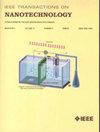A Low-Power and Reliable RRAM-Based Configurable RO PUF With Aging Resilience
IF 2.1
4区 工程技术
Q3 ENGINEERING, ELECTRICAL & ELECTRONIC
引用次数: 0
Abstract
Emerging nano-device resistive random access memories (RRAMs) have become a promising primitive for PUF designs due to their non-volatility, high density, and low power, breaking through the physical limitations. A ring oscillator based physical unclonable function (RO PUF) is one of the most widely studied PUF designs due to its resilience against noise impacts and flexibility of implementation, but its reliability is susceptible to environmental variation and device aging. Present solutions to improve RO PUF reliability either require complicated RO selection algorithms or require discarding a large number of unstable challenge-response pairs (CRPs). This paper presents a highly reliable RRAM-based configurable RO PUF (RCRO-PUF). The proposed RCRO-PUF utilizes the intrinsic variations of RRAMs as the randomness source and applies the resistance variations of RRAMs to the frequency difference of current-starved (CS) ROs. By operating CS inverters in the subthreshold region, the RCRO-PUF achieves low power as well as high reliability. In addition, a reliability enhancement scheme is proposed to eliminate the effects of environmental variations and device aging. Based on Monte Carlo simulations of a 65 nm CMOS process, the proposed RCRO-PUF consumes only 16.18% of the hardware overhead for a regular RO PUF and has only 7.43具有老化弹性的低功耗可靠rram可配置RO PUF
新兴的纳米器件电阻性随机存取存储器(rram)由于其非易失性、高密度和低功耗等特点,突破了物理限制,成为PUF设计的一种很有前途的原始材料。基于环形振荡器的物理不可克隆功能(RO PUF)由于其抗噪声影响的弹性和实现的灵活性而成为研究最广泛的PUF设计之一,但其可靠性容易受到环境变化和器件老化的影响。目前提高RO PUF可靠性的解决方案要么需要复杂的RO选择算法,要么需要丢弃大量不稳定的挑战响应对(CRPs)。提出了一种高可靠的基于随机存储器的可配置RO PUF (RCRO-PUF)。所提出的RCRO-PUF利用rram的固有变化作为随机源,并将rram的电阻变化应用于电流匮乏(CS) ROs的频率差。通过在亚阈值区域运行CS逆变器,RCRO-PUF实现了低功耗和高可靠性。此外,提出了一种可靠性增强方案,以消除环境变化和器件老化的影响。基于65纳米CMOS工艺的蒙特卡罗模拟,所提出的RCRO-PUF消耗的硬件开销仅为常规RO PUF的16.18%,每生成CRP仅为7.43 $\mu W$。RCRO-PUF在从$-50\,^{\circ}$C到$150\,^{\circ}$C和$\pm$20%电源电压变化的广泛温度范围内的可靠性为99.51%。与最先进的抗老化RO PUF相比,它的抗老化能力也提高了4.7倍。
本文章由计算机程序翻译,如有差异,请以英文原文为准。
求助全文
约1分钟内获得全文
求助全文
来源期刊

IEEE Transactions on Nanotechnology
工程技术-材料科学:综合
CiteScore
4.80
自引率
8.30%
发文量
74
审稿时长
8.3 months
期刊介绍:
The IEEE Transactions on Nanotechnology is devoted to the publication of manuscripts of archival value in the general area of nanotechnology, which is rapidly emerging as one of the fastest growing and most promising new technological developments for the next generation and beyond.
 求助内容:
求助内容: 应助结果提醒方式:
应助结果提醒方式:


